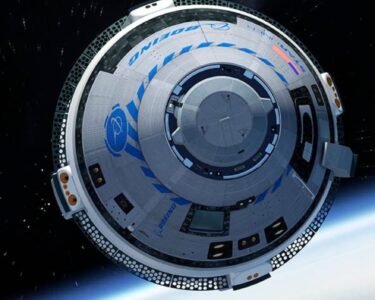JPL has developed a new Snake-Like robot called Snake-Like EELS that can move like a snake. This robot is designed to explore new terrain and environments. NASA’s Jet Propulsion Laboratory is testing a robot that can explore challenging terrain on its own. The robot can map and move around different areas without any help.
How can you make a robot explore new places without any help from humans in real time?
NASA’s Jet Propulsion Laboratory team is developing a snake-like robot to explore tough terrain. They are approaching the challenge like a startup, building, and testing quickly, learning, adjusting, and repeating the process.
What is the EELS robot and what is its purpose?
A robot entitled EELS (Exobiology Extant Life Surveyor) was created to search for signs of life in the ocean beneath the icy crust of Saturn’s moon Enceladus. It can move on its own and is designed to descend through narrow vents in the moon’s surface that shoot geysers into space.
How is the snake-like robot designed to navigate the environment of Enceladus?
Although research and development are ongoing, designing for such a difficult environment has produced a very adaptive robot. EELS are capable of navigating through different types of terrain on Earth, the Moon, and beyond. They can move through sand, and ice, climb steep walls, explore underground lava tubes, and even maneuver through the complex spaces within glaciers.
Matthew Robinson:
This robot can go to places that other robots cannot reach. Matthew Robinson, who manages the EELS project at JPL, said that while some robots are good at certain types of terrain, the goal for EELS is to be able to handle any type of terrain. If you’re exploring new areas, you need a robot that can handle unexpected situations and make smart choices. It should be adaptable and cautious to minimize risks.
What is the current size and weight of EELS 1.0, and how does it move?
The team started creating the initial model in 2019 and has been making changes ever since. They have been testing EELS every month since last year and improving its hardware and software to make it work independently. The robot, known as EELS 1.0, is currently 13 feet (4 meters) long and weighs about 220 pounds (100 kilograms). It has 10 segments that rotate and move using screw threads to propel, grip, and gain traction. The team has been experimenting with different types of screws for their project. They are using white, 8-inch-diameter (20-centimeter-diameter) 3D-printed plastic screws to test on looser terrain. For ice, they are using narrower and sharper black metal screws.
How was the snake-like robot tested in extreme conditions?
The robot has been tested in sand, snow, and icy conditions, including the Mars Yard at JPL, a “robot playground” built at a ski resort in Southern California’s snowy mountains, and even a nearby indoor ice rink.
Hiro Ono:
Hiro Ono, who is the principal investigator at JPL for EELS, said that they have a unique approach to developing robots compared to traditional spacecraft. They conduct frequent testing and make corrections quickly. Many textbooks teach how to design a car with four wheels, but none teach how to design a snake robot that can explore new places on its own. We need to create it ourselves. This is what we are currently doing.
How do EELS Think and Move?
EELS is a robot that can work on its own in deep space. It can sense what’s around it, figure out if there are any dangers, move around, and collect information using special tools that haven’t been chosen yet. This is important because it takes a long time for messages to travel between Earth and deep space. The robot should be able to fix itself without any help from humans when something goes wrong.
What are the actuators and how do they allow the robot to move?
The robot will have 48 little motors called actuators that allow it to move in different ways. This makes things harder for the people working on the robot’s hardware and software because there are more parts to deal with.
Rohan Thakker:
Rohan Thakker says that the actuators are like having 48 steering wheels. Some of them have a built-in force-torque sensor that works like skin. This helps EELS feel how much force it is using on the ground. It can move up and down narrow chutes with bumpy surfaces by adjusting itself to push against both walls, similar to a rock climber.
What challenges did the EELS team face during their expedition?
The EELS team faced a tough challenge last year when they lowered the robot’s perception head (which has cameras and lidar) into a vertical shaft called a moulin at Athabasca Glacier in the Canadian Rockies. In September, they’re going back to a location that’s similar to icy moons in our solar system. They’ll be testing a robot that can move below the surface. The team plans to release a small sensor suite that will keep track of the chemical and physical properties of glaciers. EELS will later be able to use this suite in far-off locations.
Matthew Robinson:
“Our focus so far has been on autonomous capability and mobility, but eventually we’ll look at what science instruments we can integrate with EELS,” Robinson said. “Scientists tell us where they want to go, what they’re most excited about, and we’ll provide a robot that will get them there. How? Like a startup, we just have to build it.”





